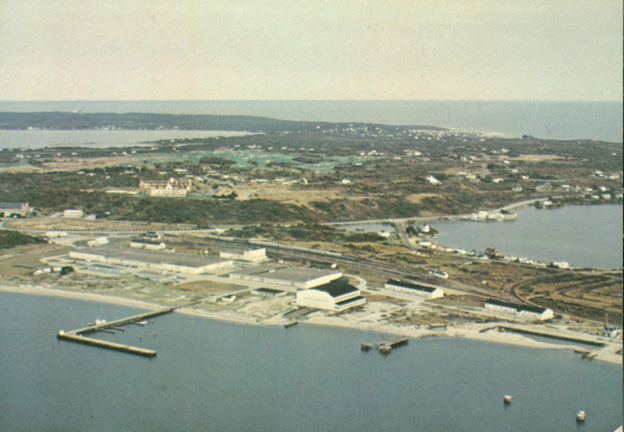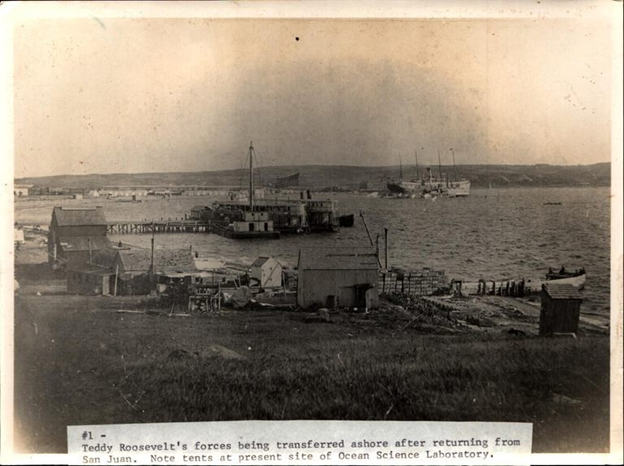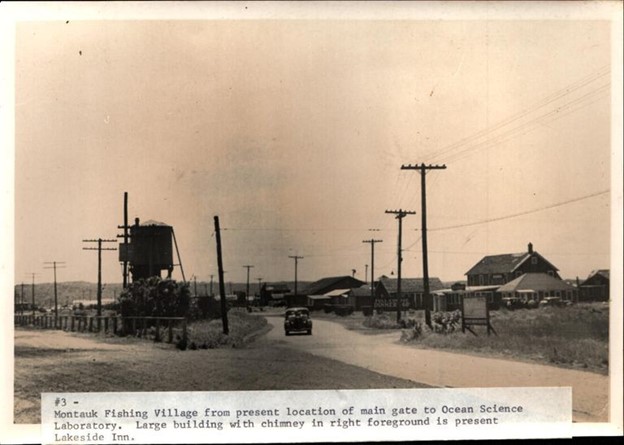
The shore at Fort Pond Bay is often so sleepy it can be difficult to imagine how awake it’s been historically. Thousands of veterans of the Spanish-American War – Teddy Roosevelt’s “Rough Riders” – disembarked from transport ships in Fort Pond Bay in 1898 to quarantine and recuperate at Camp Wikoff, whose entire infrastructure had arrived by train in the same vicinity. U.S. Navy seaplane patrols were launched from Fort Pond Bay during World War I, and Montauk’s fishing village – complete with a post office, general store, icehouses, a railroad depot, and fish-filled trains – was settled on the bay beginning around the late 19th century.
During World War II, the Navy commandeered the area to test torpedoes, evicting local residents and building more than 300,000 square feet of concrete workspace as well as barracks and a pier. And then, in the late 1960s, a group of scientists took that over – all set on more than 35 acres — to establish an ocean science laboratory they hoped would rival the famous one at Woods Hole, Massachusetts.


Affiliated with eight academic institutions and headed by Dr. John C. Baiardi, the New York Ocean Science Laboratory – known as NYOSL — opened in Montauk in 1970. Within a few years it had about 140 employees and was researching things like using genetics to restock lobsters, raising clams, striped bass, and blowfish through aquaculture, and the effects of PCB pollution on fish. A large hydraulic model had been constructed to study flushing patterns in Lake Montauk. Seaweed was being cultivated, Irish moss pudding was being served to middle schoolers, and a documentary on the lab’s activities – narrated by Arthur Godfrey — was aired during tours for groups of visitors.
The laboratory’s funding was tenuous from the start, however. One of its strongest backers was Perry B. Duryea Jr. of Montauk, the State Assembly minority leader who ran unsuccessfully for governor against Hugh Carey — which many have said persuaded the governor not to back the laboratory after he was elected in 1974.
By 1976, the ocean science laboratory was down to 52 employees, and that number had dwindled to two by 1982. In 1984, bulldozers, hydraulic excavators, and giant jackhammers razed 10 buildings to pave the way for a luxury condominium project whose name was to be Rough Riders Landing. A two-story former barracks near the railroad station was spared; today it’s known as Avallone Apartments, which is operated by the East Hampton Town Housing Authority. Another of the laboratory’s last remaining buildings is home to the town shellfish hatchery, which works to cultivate stocks of bay scallops, oysters, and hard-shelled clams that once were so abundant in Montauk waters.

2 Comments
Article says “U.S. Navy seaplane patrols were launched from Fort Pond Bay during World War I.” Is that certain? I’ve seen photos of flimsy biplanes on ramps riding into Fort Pond itself. The photos suggest the base at that time was roughly where the soccer field is in today’s downtown.
Thank you for this. We need to research this further!